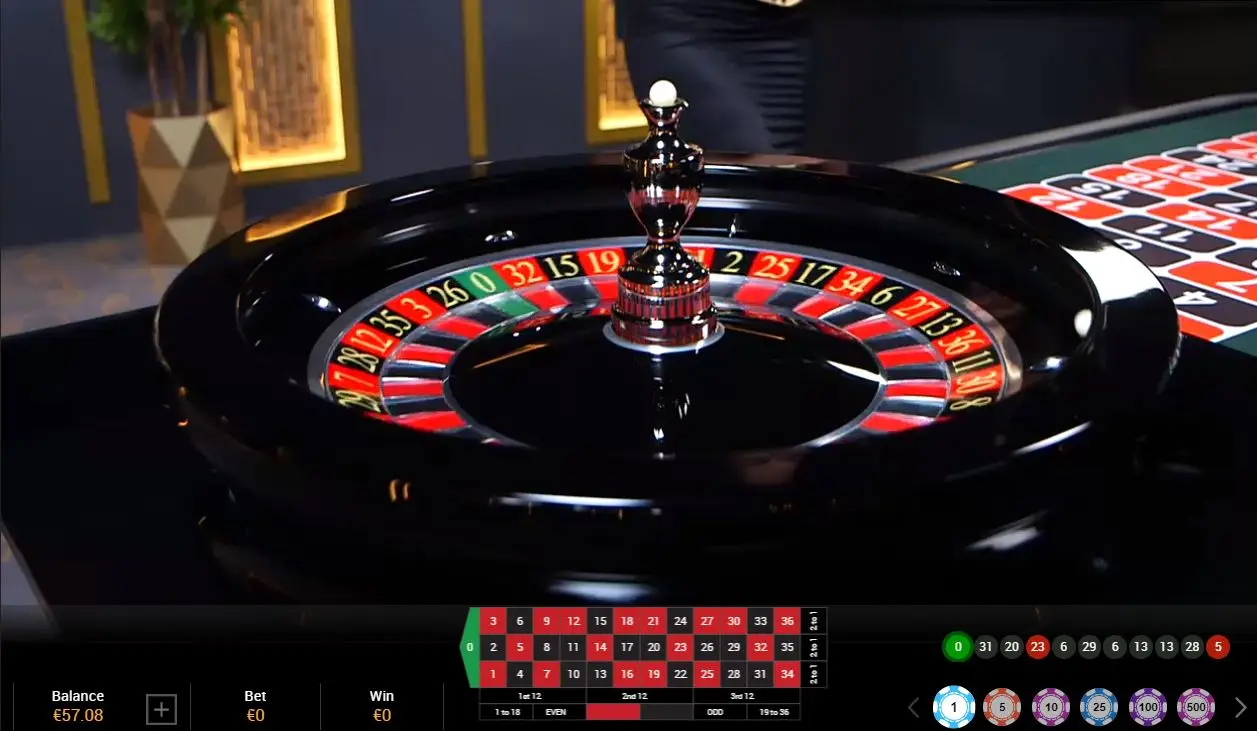The Fibonacci roulette strategy has become a true legend among gambling enthusiasts. Appeared in Italian casinos back in the 18th century, it claims to be one of the most popular methods of betting management. The approach is based on a mathematical sequence named after its creator – Leonardo Fibonacci. In 1202, he first described the methodology in the book “Liber Abaci”, where he showed how it is applied in various spheres of life, including economics. But can this ancient scheme really help to win at roulette, or is it all just another myth? Let’s find out in the article.
How the Fibonacci strategy works in roulette
Before delving into the nuances, it is worth understanding what the sequence is. Each next number in the sequence is the sum of two previous numbers: 1, 1, 2, 3, 5, 8, 13 and so on. In practice, the system works as follows: the player increases the bet after each loss, moving up the numerical ladder to cover all previous losses when winning.
The process starts with the minimum bet. If it loses, the participant moves through the sequence, doubling and increasing the amount. For example, a bet of 1 chip is followed by a bet of 1, then 2, then 3, and so on. When a player wins, he goes back two steps in the sequence and makes a run again. This allows you to gradually cover losses and stay afloat, even if you can not win immediately.
Historically, the first mention of the application of Fibonacci strategy in gambling, including roulette, is associated with the French casinos of the early 19th century. Then it was used not only for the wheel, but also for betting in card games like Baccarat.
Secrets of the system: the Fibonacci strategy in roulette
Popularity is not only due to mathematical simplicity, but also due to the ability to minimise risks. Most people involved believe that by gradually increasing the stakes, it is possible to compensate for losses and make a profit. The scheme is especially attractive for those who do not want to risk large sums of money from the beginning.
Interesting fact: the sequence is widely used in nature and economics. It can be found in the structure of sunflower flowers and even in the fluctuations of the stock market. That is why many people believe that such a universal formula will work in casinos as well. It is important to realise that the sequence has a slow-growth effect, which makes it more manageable compared to other systems, such as Martingale.
An example of the sequence in action
To illustrate the situation: a player starts with a minimum bet of 1 chip. Lose? The next bet is again 1. If he loses again, he bets 2, then 3, 5, 8 and so on. If he wins a bet of 8 chips, he goes back two positions and bets 3. This allows him to keep control of his bankroll and minimise risks. For example, after four losses and one win, he will compensate for the previous losses and remain in a small plus.
Pros and cons of Fibonacci strategy in roulette: what you need to know before you play
 One of the main advantages is that you don’t need to risk large sums of money from the start. The sequence starts with small bets and allows you to adapt your tactics depending on the current state of the session.
One of the main advantages is that you don’t need to risk large sums of money from the start. The sequence starts with small bets and allows you to adapt your tactics depending on the current state of the session.
However, there are also disadvantages. If a participant faces a long series of losses, the amount of bets begins to grow sharply, which can lead to large losses. For example, after ten unsuccessful decisions, the size of the next lost amount will significantly exceed the initial budget, which will make the continuation of the session almost impossible.
It should also be remembered that roulette is a game with negative mathematical expectation. This means that the establishment always has an advantage, no matter what tactics the customer has chosen. In the case of roulette, the casino’s advantage is about 2.7% for the European version and 5.26% for the American version, which means that even the best schemes cannot guarantee long-term profits.
Fibonacci strategy in roulette for beginners: how not to lose all the money at once
For those who are new to Fibonacci, it is important to understand the basics of bankroll management. You should not start with large sums of money, especially if you are not sure of the tactics. The initial bet should be minimal so that there is enough money for several cycles of the sequence. On average, experienced participants recommend allocating at least 50-100 minimum bets to use the Fibonacci strategy to ensure sufficient resilience against losing streaks.
Practical tips for beginners:
- Start with minimum bets and don’t increase them too quickly.
- Determine the limit of losses in advance and do not exceed it.
- Avoid emotional decisions during the game, set a timer to control the time.
- Use the strategy on European Roulette as it offers a lower casino advantage.
Comparing the Fibonacci strategy in roulette with others
Comparing the sequence to other tactics, particularly Martingale, shows that both have advantages and disadvantages. Unlike Martingale, where bets are doubled after each loss, Fibonacci offers a more moderate upside, which reduces the risk of rapid losses.
Martingale requires a large capital, as the bets are doubled after each loss, which can lead to the loss of high sums after only a few failures. For example, after ten losses, the bet on the Martingale system will be 1024 units, which is unaffordable for most participants. In turn, the Fibonacci system allows you to increase bets more smoothly, which makes it less risky, although less profitable in a successful outcome.
Risks of using Fibonacci strategy in roulette: what you need to pay attention to
The risks are that even moderate bets can quickly grow to huge sums in the event of a long losing streak. This is especially dangerous for players with limited budgets, who may not be able to withstand a long losing streak.
For example, starting with 1 chip, after 10 losses a player will be betting 89 chips. Not everyone is ready for such a risk, and it is important to realise that the tactic does not guarantee a win, but only allows you to structure the process. Professionals also note that the Fibonacci strategy works best in short roulette sessions.
Conclusion
 Fibonacci roulette strategy can be useful for those who prefer a careful and methodical approach to the process. It allows you to gradually increase your bets and keep control of your bankroll.
Fibonacci roulette strategy can be useful for those who prefer a careful and methodical approach to the process. It allows you to gradually increase your bets and keep control of your bankroll.
It is important to remember that roulette remains a game of chance, and no strategy can bypass the mathematical advantage of the casino. Try the scheme in demo mode or with small stakes to see if it suits you.
of the casino. Try the scheme in demo mode or with small stakes to see if it suits you.
 en
en  de
de  ar
ar  es
es  hi
hi  fr
fr  nl
nl  it
it  pt
pt  el
el 









